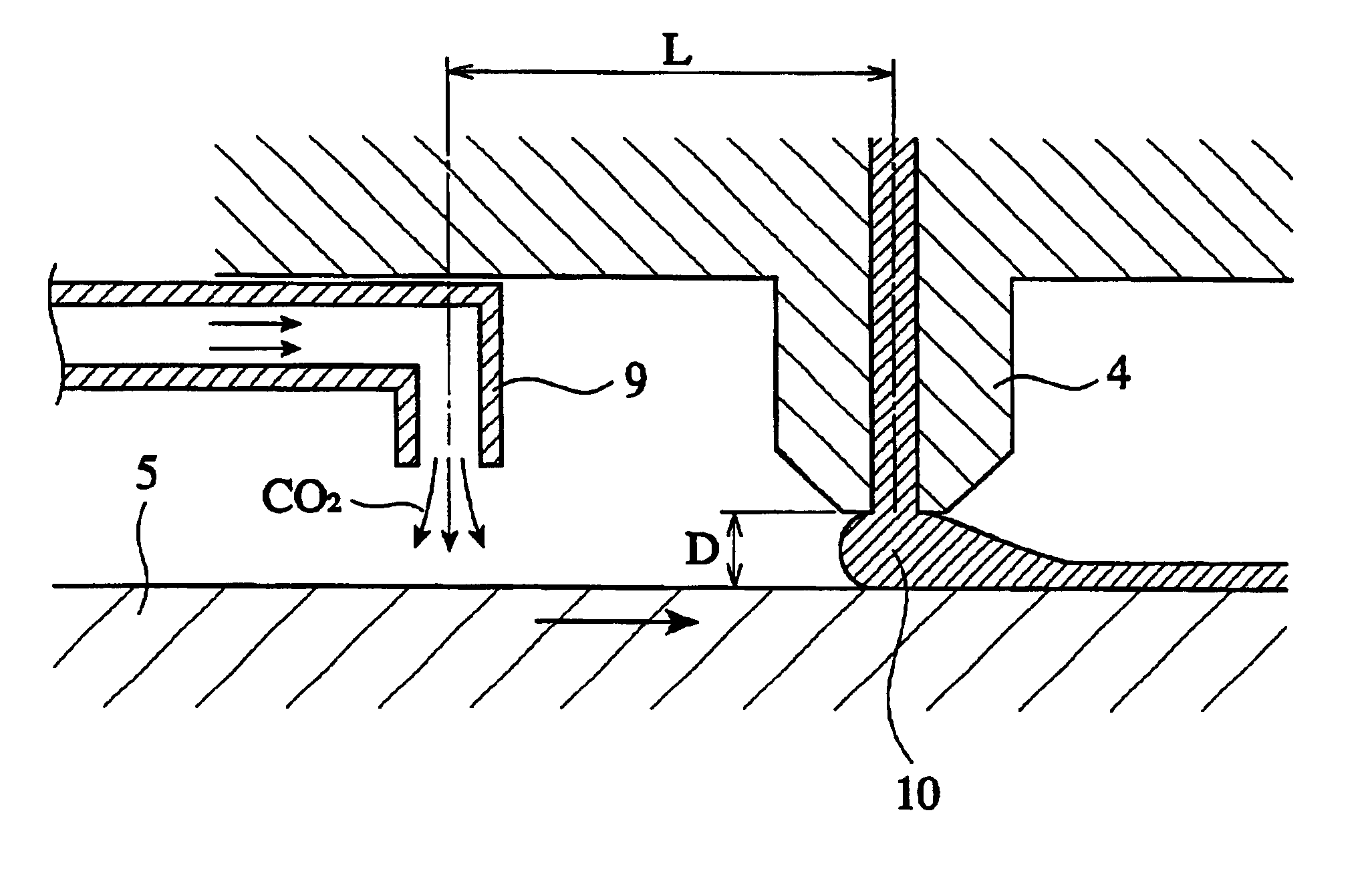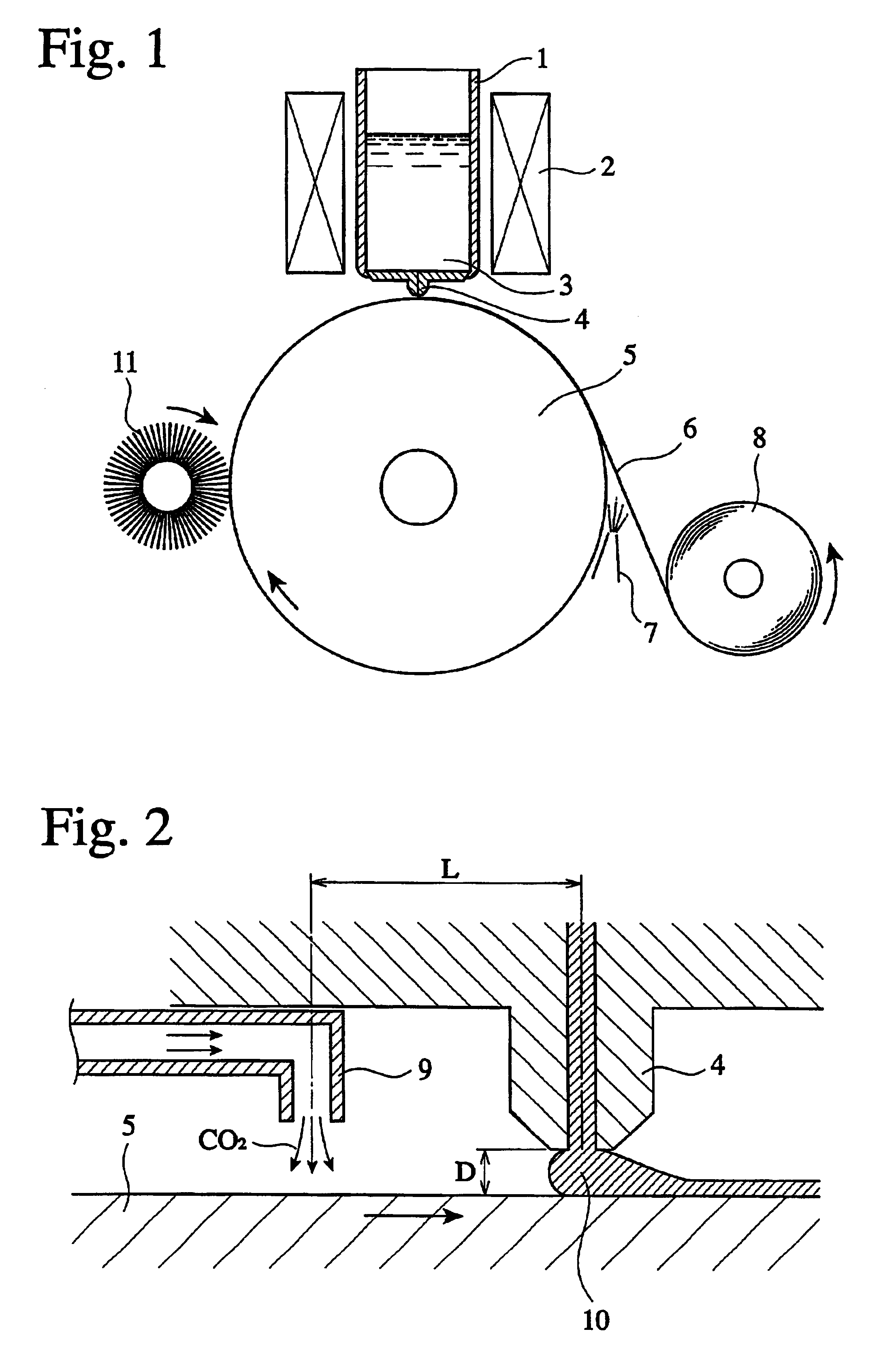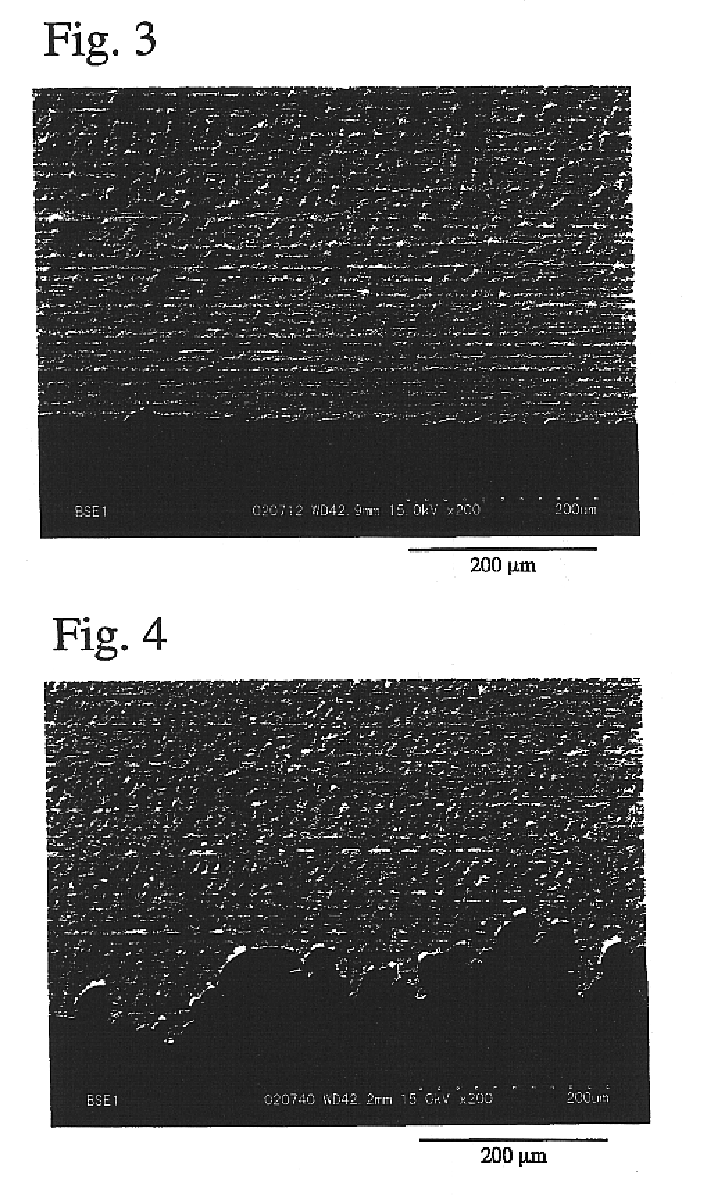Method for producing amorphous alloy ribbon, and method for producing nano-crystalline alloy ribbon with same
a technology of amorphous alloy ribbon and nano-crystalline alloy, which is applied in the field of producing amorphous alloy ribbon and producing nano-crystalline alloy ribbon with same, can solve the problems of embrittlement and crystallization of formed amorphous alloy ribbon, extreme difficulty in handling, and new irregular shape of serrated edge portions
- Summary
- Abstract
- Description
- Claims
- Application Information
AI Technical Summary
Benefits of technology
Problems solved by technology
Method used
Image
Examples
examples 1 and 2
, COMPARATIVE EXAMPLES 1-4
Production and Evaluation of Amorphous Alloy Ribbon
An ingot of an Fe-based alloy having a composition of Cu.sub.1 Nb.sub.2.5 Si.sub.13.5 B.sub.7 Fe.sub.bal. by atomic % was introduced into a crucible 1 shown in FIG. 1, and melted by induction heating by a high-frequency coil 2. The resultant alloy melt 3 was ejected onto a cooling roll 5 made of a Cu--Be alloy and rapidly quenched under the conditions shown in Table 1 below, to form an amorphous alloy ribbon 6 of EXAMPLE 1 having a width of 30 mm and a thickness of 19 .mu.m.
As shown in FIG. 1, the resultant amorphous alloy ribbon 6 was caused to peel off from the cooling roll 5 by supplying a nitrogen gas from a nozzle 7 onto the cooling roll 5 in an opposite direction to the rotation direction of the cooling roll 5, and a reel 8 having a permanent magnet embedded therein and rotating in an opposite direction to the rotation direction of the cooling roll 5 was brought close to the cooling roll 5 to wind the...
examples 3 and 4
, COMPARATIVE EXAMPLES 5-8
An ingot of an alloy having a composition of 9 atomic % of Si W and 13 atomic % of B, the balance being substantially Fe, was introduced into a crucible 1 shown in FIG. 1 and melted by induction heating by a high-frequency coil 2. The resultant melt 3 was ejected onto the cooling roll 5 made of a Cu--Cr alloy and rapidly quenched to produce an amorphous alloy ribbon 6 having a width of 40 mm and a thickness of 20 .mu.m under the conditions shown in Table 4.
Taken as samples were amorphous alloy ribbon portions obtained when 1 and 10 minutes, respectively, passed from the start of casting. The samples of EXAMPLE 3 and COMPARATIVE EXAMPLES 5 and 6 were ribbon portions obtained when 1 minute passed from the start of casting, and the samples of EXAMPLE 4 and COMPARATIVE EXAMPLES 7 and 8 were ribbon portions obtained when 10 minutes passed from the start of casting.
Incidentally, the grinding of the cooling roll 5 was carried out by rotating a brush 11 in the same...
examples 5-7
Each ingot of alloys having compositions shown in Table 8 was introduced into a crucible 1 shown in FIG. 1, and melted by induction heating by a high-frequency coil 2. Each of the resultant alloy melts 3 was ejected onto a cooling roll 5 made of a Cu--Be alloy and rapidly quenched to produce an amorphous alloy ribbon 6 having a width of 30 mm and a thickness of 22 .mu.m under the conditions shown in Table 7. The casting of the amorphous alloy ribbon was repeated 10 times. In the production process of the ribbon with a CO.sub.2 gas supplied, the grinding of the cooling roll 5 was carried out by rotating a brush 11 in the same direction as the cooling roll 5. The winding method of the resultant ribbon was the same as in EXAMPLE 1.
Each of the resultant ribbons was measured with respect to an average surface roughness Ra according to JIS B 0601 both on a freely solidified surface and on a side in contact with the cooling roll 5. Also, a 180.degree. bending test was carried out according...
PUM
| Property | Measurement | Unit |
|---|---|---|
| surface roughness | aaaaa | aaaaa |
| surface roughness | aaaaa | aaaaa |
| length | aaaaa | aaaaa |
Abstract
Description
Claims
Application Information
 Login to View More
Login to View More - R&D
- Intellectual Property
- Life Sciences
- Materials
- Tech Scout
- Unparalleled Data Quality
- Higher Quality Content
- 60% Fewer Hallucinations
Browse by: Latest US Patents, China's latest patents, Technical Efficacy Thesaurus, Application Domain, Technology Topic, Popular Technical Reports.
© 2025 PatSnap. All rights reserved.Legal|Privacy policy|Modern Slavery Act Transparency Statement|Sitemap|About US| Contact US: help@patsnap.com



